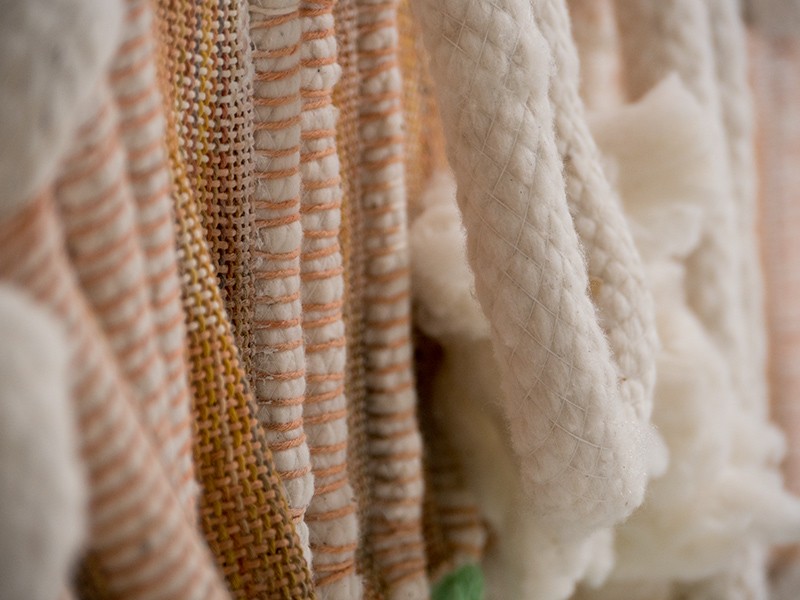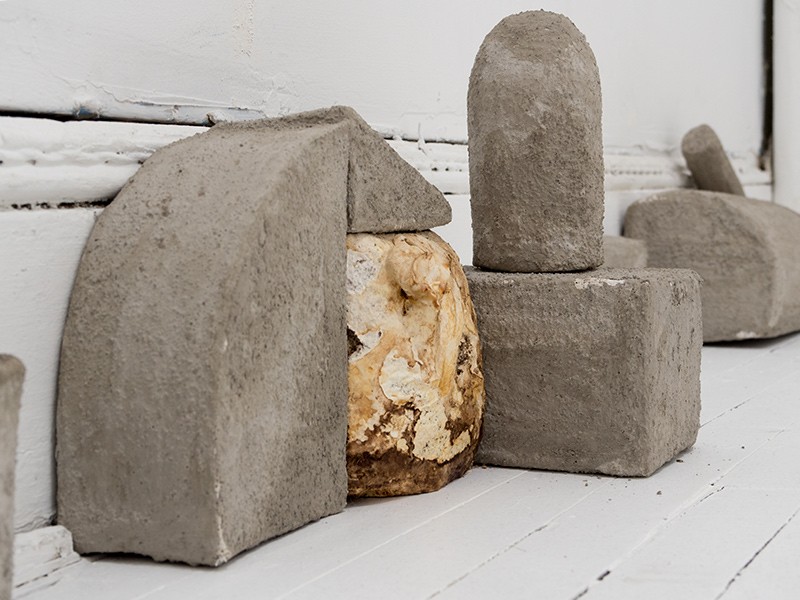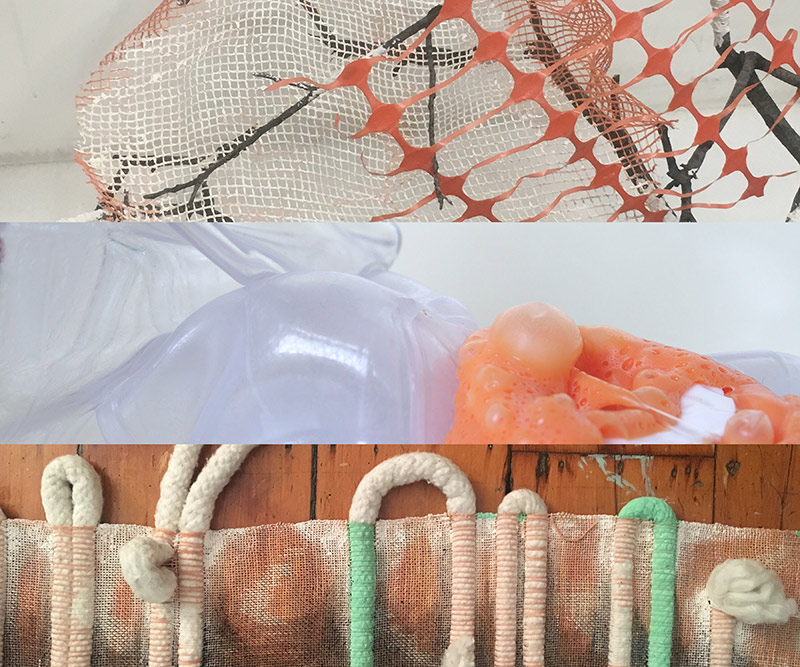
Open Syntax #3: Organics
Group show featuring Ánima Correa // Alexa Punnamkuzhyil // Ana Ratner
Curated by Danielo Garcia
Opening reception Friday, January 12th, 6-8pm.
On view through Sunday, January 28th.
Gallery hours: Sundays, 2-4pm and by appointment.
Open Syntax is an evolving seriality that embraces multi-forms and rapid response. An art blog IRL, if you will. In this third iteration, we explore artists that incorporate organic materials into their practice. These artists cultivate, repurpose, remix and/or neutralize organic matter to achieve new and exciting formations. Though an artist’s chosen list of materials are an integral part of a conceptuality, these works forgo the romantic notion of an organic-only formalism. They instead embrace the interplay with the synthetic matter, thus revealing a protected fragility. And while they indeed share an interest for this said materiality, each practice is unique from that point of departure.
Tapping into her family history and affinity for the scientific world, in the Autoclave series Alexa Punnamkuzhyil uses, or better yet “misuses” the autoclave, a sort of pressure-cooker-type machine designed to sterilize laboratory equipment. By pressurizing non-autoclave-safe containers filled with everyday objects such as live flowers, pearls, steroids, nasal decongestants, etc., Punnamkuzhyil achieves unpredictable shapes and contortions. As with her 2016 work Growlight, which makes use of a modified x-ray machine to grow wheatgrass in the gallery, Punnamkuzhyil’s exploration of medical devices hints to a deeper preoccupation with the possible failings of the human body.
Working across multiple mediums, Anima Correa’s works makes use of a subtle artistic iconography via the choice of materials and repeating marks. This iconography seems to speak of a guarded spirituality. She states, “the iconography is a pathway to understanding how transmutation can exist on both a practical and conceptual level.” Items such as construction netting and tree branches, are recurring elements in her sculptures and serve as imagery within her paintings. In Hive Mind, Correa brings these elements together to create a webbing or cocooning around organic forms. The result may lead us to question whether we are seeing a caught-by-the-net effect or a protective barrier at work. As she puts it, it aims to “speaks to a ‘syncretic existence’ or ideology through the synthesis of forms.”
Although she grew up in New York City, Ana Ratner has spent much time traveling throughout upstate New York “to study plant medicine, tend bees, raise sheep, farm, and harvest nettles, mustard, and mushrooms.” This time spent in the country has served her well. Ratner’s works seem to come from a natural desire for healing others. Via meal-making performances, sculptures to aid in the process of grieving and birth-supporting as a doula, her practice and works are a manifestation of a caregiver. The piece in this show, Under-Ripe, Over-Ripe (tough, green, red bits), impressively brings these elements together, by incorporating weavings, cotton ropes and walnut dyes.
It is evident that these artists are wrestling with a new take on existing mediums. Thus, we wonder if a second commonality between them is their use of healing as form -- be it psychological, spiritual or physical.
___
Bios:
Anima Correa (b. 1990, Los Angeles) is a New York based interdisciplinary artist whose practice utilizes transmutation as a tool for questioning concepts of land ownership and unlocking archives of spiritual debt. She is a co-founder of artist run space AMO Studios (2011-14) and has exhibited at 67, Kimberly Klark (New York), and Callao Monumental (Lima), among others. She is a graduate of both the Eugene Lang College for Liberal Arts and the Parsons School of Arts at The New School.
www.animacorrea.com
Alexa Punnamkuzhyil is an interdisciplinary artist whose work engages the poetics of biological and social systems. She grew up in labs and around laboratory equipment—her father is a geneticist, her uncle was a biochemist, and her great grandfather was a witch doctor. Her work draws on scientific inquiry, medical discourse, and structures of perception between people, plants, animals, and things. She is a graduate of Oberlin College and the University of California, Berkeley. Born in Baltimore and raised in Northern California, she currently lives and works in Brooklyn.
www.alexapunnamkuzhyil.com
Ana Ratner is a sculptor and designer. Her background is in weaving and textile work. She recently received her MFA from the Milton Avery Graduate School of the Arts at Bard College. Her recent work explores objects as projection mediums for understanding our internal space. Her past work includes “Furniture for Grieving,” a series of furniture installed in public locations that interrupt how we move and interact with others in designed spaces. Ana is a co-founder of the organization Herban Cura: an organization that brings traditional and nature based healing to urban areas. Through Herban Cura she works as a birth doula and herbalist. Her work as a doula influences her practice by raising questions around connection, bodies, and labor. Herban Cura has held events at Changes Gallery, The New Museum, and at many events throughout New York City.
www.anaratner.com / www.herbancura.org
---
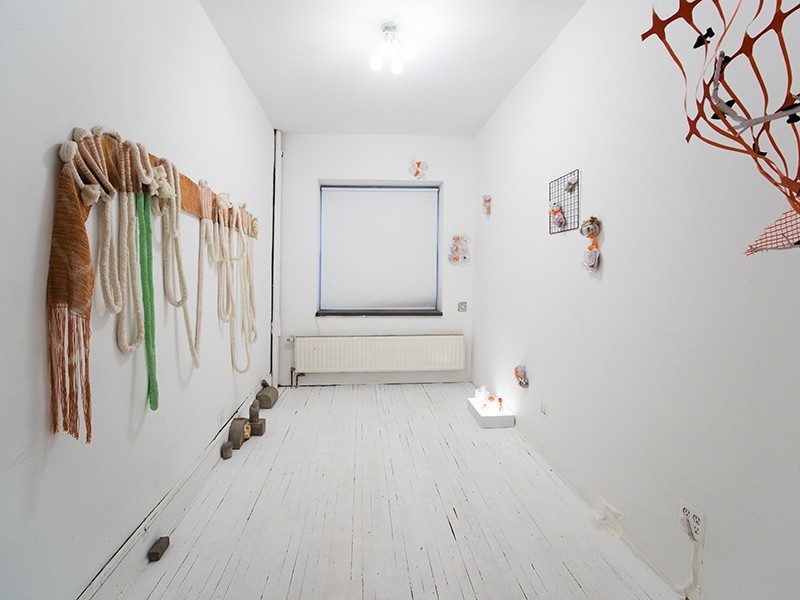
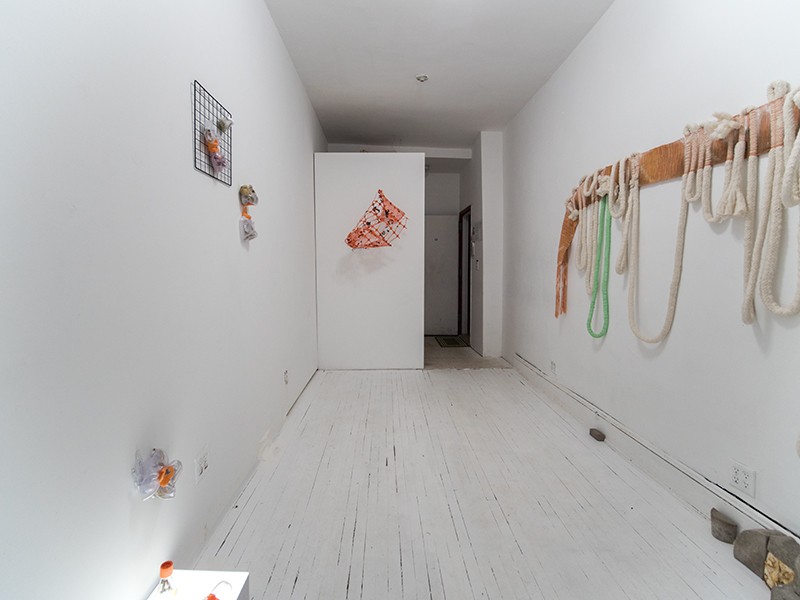
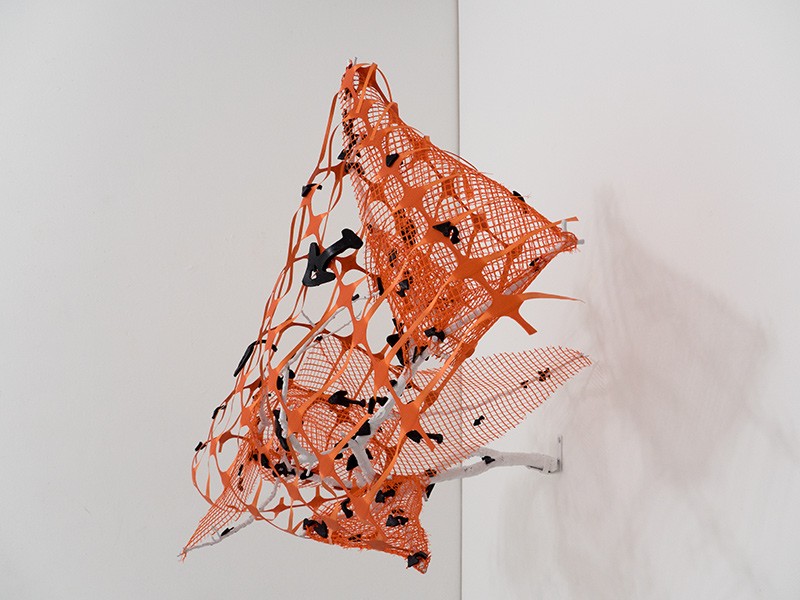
//Found branch, drywall joint compound, spray paint, clay, acrylic, construction netting, hardware//
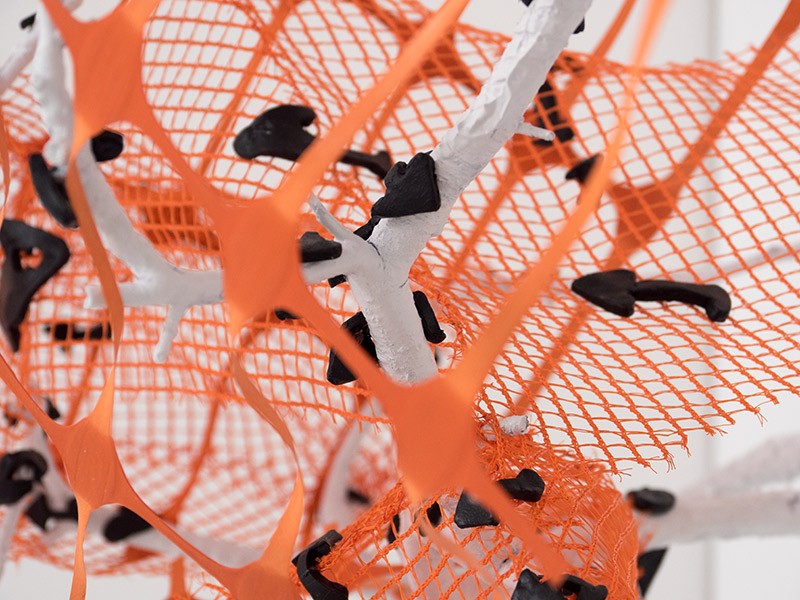
//Found branch, drywall joint compound, spray paint, clay, acrylic, construction netting, hardware//
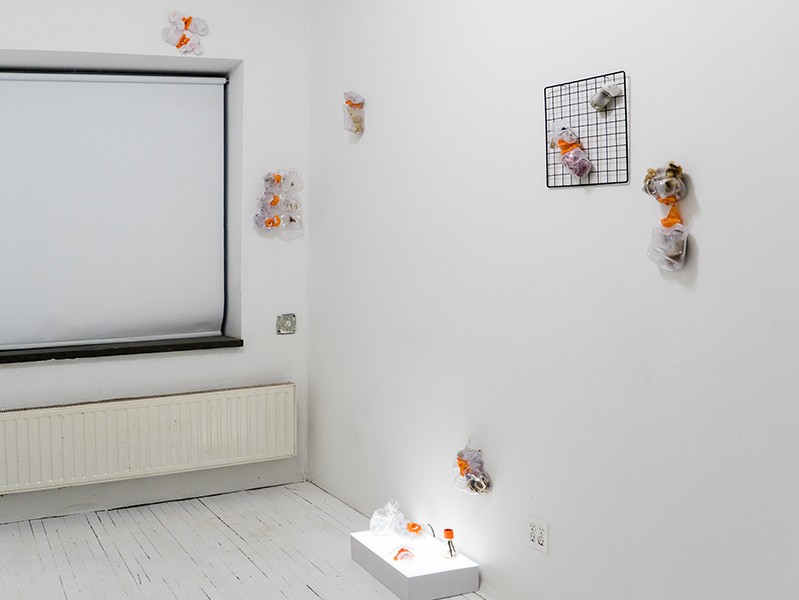
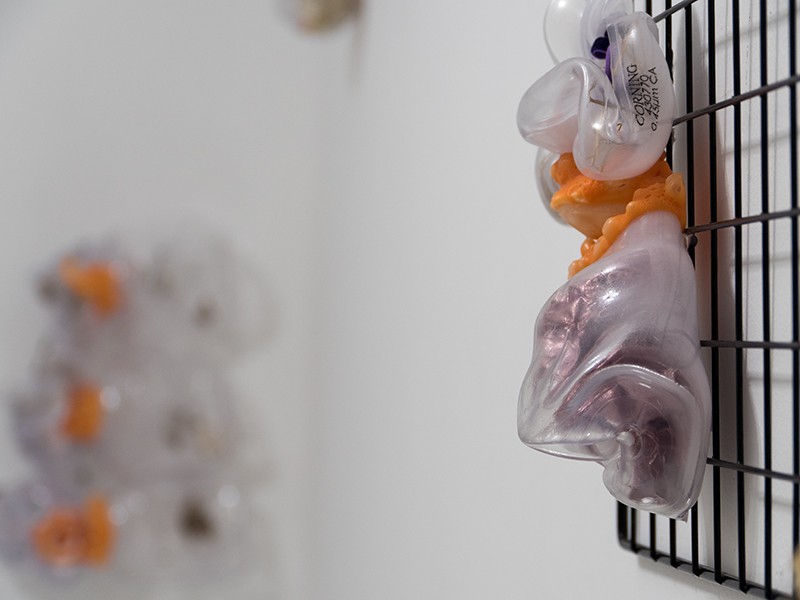
//Corning vacuum filtration/storage bottle for tissue culture (polystyrene receiver bottle, cellulose nitrate membrane, and polyethylene neck adaptor) 500ml, steel coated grid, polystyrene sample bottle and cap, skin steroidal ointment, hay, wheat grass seeds, lamé, marijuana, rhinestones, pig’s blood, PCR resin crystals, spider’s web, glass marble, lichen, pine twigs//
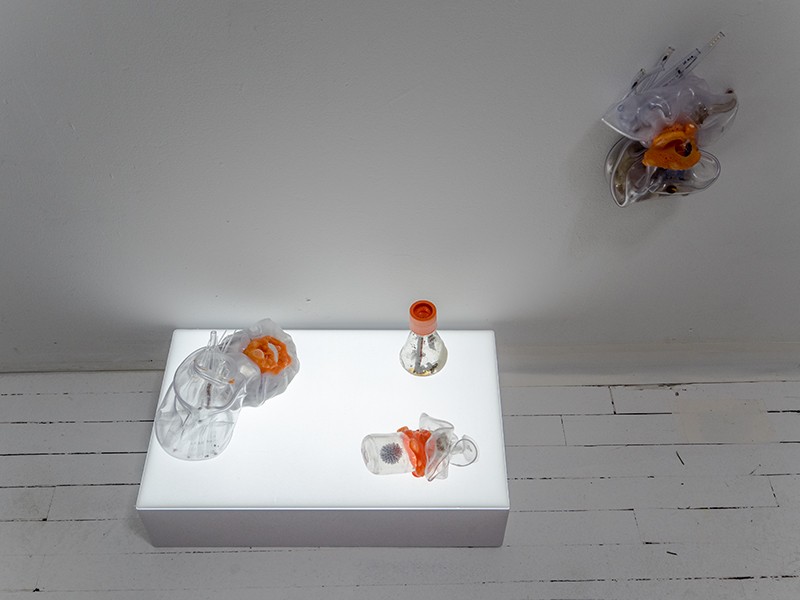
L to R: "The Life and Death of St. Sebastian", "Irene" & "Anne Boleyn"
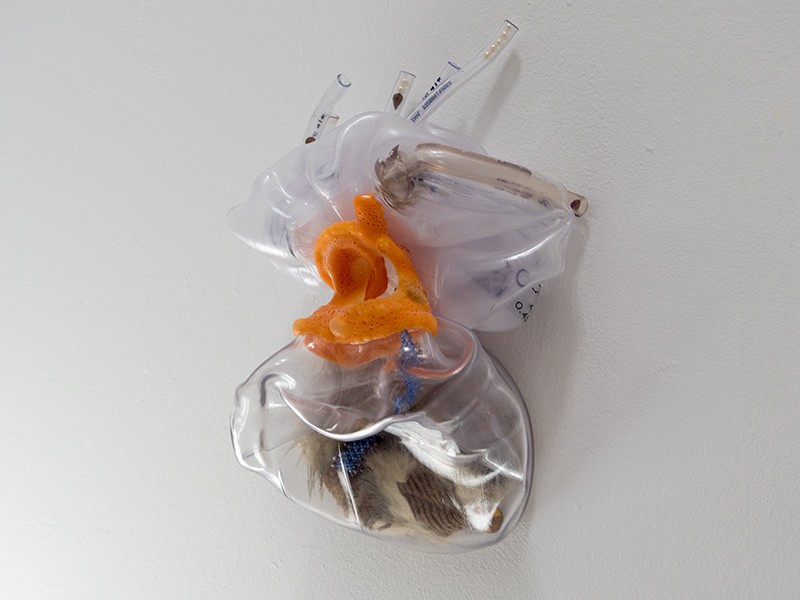
//Corning vacuum filtration/storage bottle for tissue culture (polystyrene receiver bottle, cellulose nitrate membrane, and polyethylene neck adaptor) 1000ml, mink fur, satin, glass beads, silk thread, pearls, rhinestones, coal tar, charcoal, lichen//
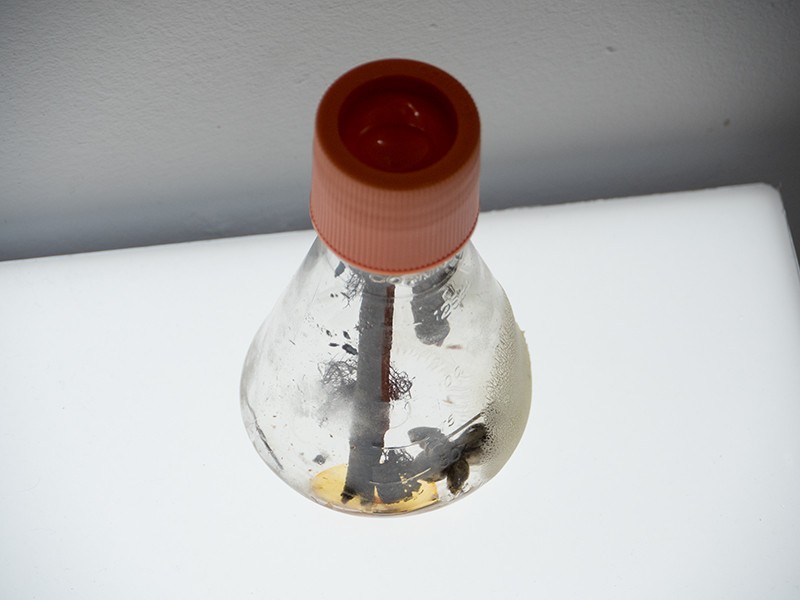
//Corning vacuum filtration/storage bottle for tissue culture (polystyrene receiver bottle, cellulose nitrate membrane, and polyethylene neck adaptor) 500ml, two alarm clocks, skin steroidal ointment, triple-antibiotic cream, BarbieÒ comb, glass crystals, antihistamine (fexofenadine)//
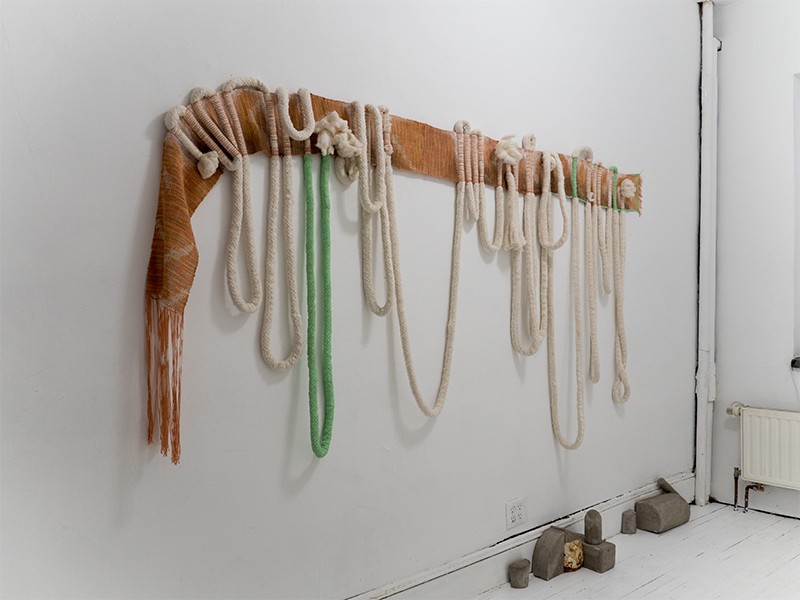
//Cotton thread, Cotton Piping, bengala dirt dye, black walnut pigment, acrylic paint, Mycelium//
